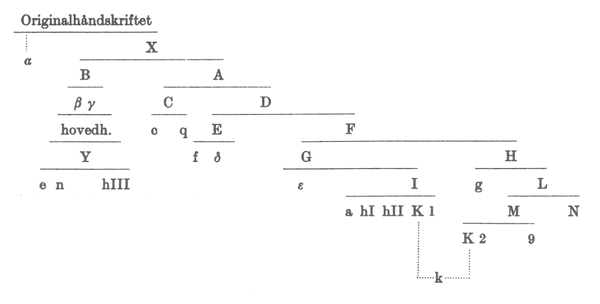Codex optimus
A codex optimus is the best manuscript in a manuscript tradition. What is ‘best’ is obviously a matter of definition and possibly of taste, but it usually means that it is the oldest and/or best preserved manuscript and as such best suited for an edition of the work in question. Some editions, in this lexicon referred to as documentary editions, select a single manuscript as the base, hence the term best-manuscript editionsEdition, best-manuscript.
Since the search for errors (or, more neutrally, innovations) is central to the stemmatological method, it follows that a manuscript at a higher position in the stemma usually is a better manuscript than a manuscript situated lower, other things being equal. This does not exclude the possibility of stemmatologically lower positioned manuscripts being better in terms of e.g. literary quality, but that should be regarded as a different matter. The text of such a manuscript may be seen as a new redaction or even version (and possibly be edited for its own sake).
It is not uncommon that the oldest preserved witnesses in a tradition are fragmentary, so that the supposedly best manuscript is not found at the top of the stemma, but still closer to the origin of the tradition than later manuscripts. This is the case with the Old Norwegian Konungs skuggsjá ‘The King’s Mirror’ (mid-13th century), in which the fragments β and γ are located above the main manuscript, hovedh[åndskriftet], which is commonly regarded as the codex optimus. The fragments β and γ are very short, so neither can be termed a codex optimus in any meaningful sense. A fragment is simply not a codex any more, even if it once might have been part of a complete codex.
In Latin, optimus is the superlative of the adjective bonus ‘good’.
Cf. also best-manuscript edition.
Illustration

Fig. 1. A stemma for Konungs skuggsjá, from the edition by Ludvig Holm-Olsen (1983, xiv). Originalhåndskriftet is the original, now lost manuscript, while hovedh[åndskriftet] in the B branch is the main manuscript, København, Den Arnamagnæanske Samling, AM 243 bα fol. Above the main manuscript are located the two fragments β and γ. In this stemma, α is another fragment, which, if complete, would have been an obvious candidate for being the codex optimus.
Bibliography
– Holm-Olsen, Ludvig, ed. 1983. Konungs skuggsiá. 2nd ed. Norrøne tekster, vol. 1. Oslo: Kjeldeskriftfondet.
In other languages
The Latin term is generally used, or modern equivalents such as best manuscript.